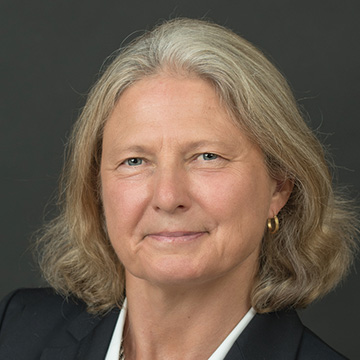Despite all the advances in technology in recent years, the commercial mortgage industry has been slow to adapt to the digital age. The reasons include the fact that commercial loan transactions are composed of more than just real estate. The loans themselves can be much more complicated than residential real estate deals because there are often multiple entities and properties included.
A commercial mortgage deal can include literally hundreds of pages of documents, which is certainly more than the typical residential loan. In addition to the note and deed of trust, the documentation may include loan agreements, environmental indemnities, rent rolls, assignments of contracts, security agreements, financing statements and guaranties. With all these documents in mind, wouldn’t the process be faster and less expensive if the paper disappeared?
Airlines evolution
If digitization is delayed, commercial mortgages will remain mired in a difficult and expensive paper process that will be increasingly difficult to move to the next technological step.
As air transit grew to span the globe, the airline industry soon recognized the need for standardized ticket information and appearances. In 1930, the International Air Transport Association (IATA) developed the first standards for a handwritten ticket, which were used by the industry until the early 1970s.
With the increased use of computers, an electronic ticket or “neutral paper ticket” was developed by IATA. All airlines were able to process the ticket and electronically exchange information. The ticket was further automated with a magnetic stripe on the back, which stored all travel information and enabled its use as a boarding pass. The first electronic tickets, or e-tickets, were issued in the 1990s. By 2008, IATA bid farewell to the paper ticket as the industry had converted to 100% electronic ticketing.
Did the airline industry become paperless? No. It is still possible to get a paper ticket and you may print a boarding pass, but paper tickets are virtually obsolete these days. The major benefits of e-tickets are that they cost a fraction of a paper ticket, and the information in an electronic format can be recreated at any time and exchanged between trading partners.
Residential goes paperless
The digital transition of the residential mortgage industry has mimicked the airline industry’s flight path. The trajectory to eliminate paper in both industries included standardized data, a common visual presentation and the ability to exchange information among trading partners.
To develop and promulgate standards, the mortgage banking industry formed the Mortgage Industry Standards Maintenance Organization (MISMO). In the early 2000s, MISMO joined with Fannie Mae and Freddie Mac to develop a standard representation for electronic mortgage documents called the SMART Doc, which stands for securable, manageable, archivable, retrievable and transferrable document.
Moving commercial mortgage transactions to a digital form will take effort as these notes are not uniform documents.
The SMART Doc provides tamper evidencing to detect unauthorized access. Why not use a version of the SMART Doc for commercial mortgage e-notes? This would remove the need to “stare and compare,” or manually extract data and prove that the document remains the same as it did at closing.
MISMO defines the electronic mortgage as one where the critical loan documentation (specifically, the promissory note) is created, executed, transferred and ultimately stored in electronic fashion. This definition narrows what can be described as an e-mortgage in residential lending. Only loans with an electronic promissory note qualify. So, the same could be true for commercial real estate loans.
Finding solutions
In the case of the promissory note document, there are special considerations. Promissory notes are negotiable instruments and are effectively treated as cash. In the paper world, the note is payable to the named payee or the person in possession of the original wet ink signed document. In the electronic world, there isn’t an equivalent of possession.
Since it is easy to make copies of and/or change an electronic document, the mortgage industry agreed to designate a centralized registry that identifies the authoritative copy or electronic equivalent of the paper original. This ensured that the electronic document had not changed in any way after the borrower signed it.
Recently, members of the Federal Home Loan Banks introduced a need for a project to explore e-notes for commercial and multifamily properties, and a working group at MISMO is developing a road map. A runway similar to the one built for residential e-notes is needed. This includes standardized data and forms; e-signature capabilities; security from tampering; designation of an electronic “original” document; and a source to determine the electronic “holder” of the e-note. Much of this framework has been created by residential e-notes, which rely on a centralized system of record: the MERS eRegistry.
The government-sponsored enterprises (Fannie and Freddie) have defined delivery requirements for acceptance of e-notes and some of these requirements could be leveraged. Most importantly, the residential mortgage industry has created a market for e-note salability. Commercial and multifamily loans could easily follow by adopting a centralized registry for transference of ownership rights. This centralized registry wouldn’t need to follow the same path as the residential sector as technologies such as blockchain could provide an alternative means to determine the electronic holder or controller of the e-note. These are issues that will need to be addressed in MISMO’s road map.
Dangers of digitizing
Moving commercial mortgage transactions to a digital form will take effort as these notes are not uniform documents. They can be modified after origination, and they may involve multiple properties and entities rather than a single asset and one or two borrowers. Leveraging the residential framework for e-notes is an option.
The MISMO eMortgage Community of Practice is nearing publication of the next version of SMART Doc specifications, which will support any type of portable document format. If the SMART Doc framework is adopted for commercial loans, the remaining tasks will be to define standards for the data within the promissory note, to build a framework for ownership and to create a marketplace.
MISMO has defined, standardized data for commercial mortgages in a common dictionary or reference model. This includes a property’s financial operating statements, green utility data for multifamily homes, property inspection reports and servicing transfers. Much data exists today on both the residential and commercial sides of MISMO.
What remains to be done is an analysis of the commonalities of the data across commercial and multifamily promissory notes, and to leverage what MISMO already has defined. Additionally, the residential framework allows for loan modifications, but there may be more work to allow post-origination changes to commercial loans.
● ● ●
Adoption of the SMART Doc system could solve the issue around variability and modification in digital commercial mortgage documents, but this does not solve the issue of how to determine ownership or a lack of liquidity for investors. Multifamily and commercial loans may have different frameworks than the residential sphere.
In a perfect world, there should not be stovepiped processes for residential, commercial and multifamily loans. All of this sounds like a lot of work, so why do it? There are consequences for not doing so. If digitization is delayed, commercial mortgages will remain mired in a difficult and expensive paper process that will be increasingly difficult to move to the next technological step.
It is best to begin the effort now, use standards that already exist and not leave commercial real estate loans up in the air. Without a clear and secure flight plan, however, the destination may not be reached safely. ●
-
Rachael Sokolowski is president of Magnolia Technologies LLC. She is a recognized leader, technology evangelist, trusted adviser and author in the mortgage banking industry. Sokolowski is currently co-chair of the MISMO eMortgage Community of Practice and is certified by MISMO as a Mortgage Standards Professional (CMSP). In 2016, Sokolowski received the MISMO Chairman’s Award and was named by Mortgage Women Magazine as a technology leader and entrepreneur in the industry.
View all posts






